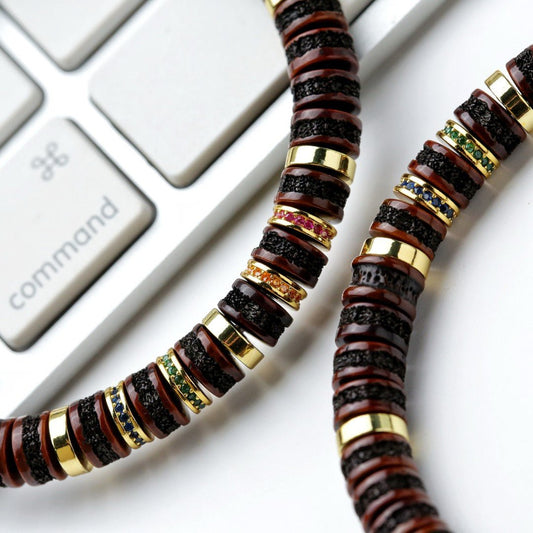
Amid the sophisticated tapestry among Tibetan spiritual traditions stand two meaningful icons: the colorful thangka and consecrated bodhi token. Each, consistently, in defined style, bridges connections to sacred insight. The thangka, an elaborate depiction, features deities, cosmic designs, or scriptural scenes, supporting mindfulness exercises.
Simultaneously, the bodhi bead, often crafted from exquisite rocks, grain, seeds, or bone, is a tangible reminder of Buddha's awakening under the bodhi tree. Handling the beads deepens focused awareness.
- Individually, the thangka and the bodhi bead represent the path to liberation. They offer a tangible link to the traditional insight of Tibetan Buddhism.
Stories Told by Camel Skeletons
Amidst long-forgotten periods, timeless treasures whisper tales to a world long faded. These are not ornate objects associated with suppressed empires, but plain camel bones sculpted with characters that safeguard the mysteries of a bygone era. Every fragment whispers the echo of a life lived, a journey undertaken, and a connection to the ancient wisdom containing which encompasses us all.
- These
- Artifacts
- Offer
Revealing the Hidden Language of Thangka Paintings
Tangkas are vibrant paintings on canvas, meticulously crafted by Tibetan artists to depict spiritual figures and scenes from Buddhist writings. Each detail within a thangka is laden with depth, forming a complex tapestry of visual narratives that guide the viewer on a meditative journey. The chromatics used in thangkas are not merely aesthetic choices but carry essential connotations, symbolizing different aspects of the Buddhist practice. From the solemn figures to the intricate motifs, thangkas offer a glimpse into the rich world of Tibetan Buddhism, inviting us to ponder upon its wisdom.
- Time-honored thangka art often depicts key Buddhist figures such as Buddha Shakyamuni, Bodhisattvas like Avalokiteshvara and Manjushri, and enlightened beings from various factions of Tibetan Buddhism.
- Within these representations lies a wealth of understanding that can be accessed by those who investigate the symbolic language of thangkas.
Tathagata's Path to Enlightenment: Embodied in Beads and Bone
Upon the winding journey to awakening, the Buddha wielded representations imbued with profound value. The very bead and object held within them the essence of his transcendent vision, presenting glimpses into the mosaic of reality. By way of their appearance, the Buddha imparted profound discoveries that outshine the realm of mundane perception.
From those devotional beads, crafted from precious materials, issued vibrations that aligned with the delicate currents within. The remains of a existence, meticulously transformed into charms, served as tangible symbols of the impermanence native to all entities.
Thangkas: Windows into Himalayan Spirituality
Thangkas colorful paintings on cloth serve as impactful representations of Himalayan spirituality. These intricate works of art, meticulously created with detailed brushstrokes, depict a vast array featuring Buddhist deities, mandalas, and scenes from time-honored scriptures. Each thangka is a profound portal for meditation and contemplation, offering cognition into the multifaceted teachings of Buddhism.
- They are often used in ritual ceremonies and
- transcending states of spiritual illumination.
- Thangkas serve as not merely decorative works but rather pathways into the rich and engaging world of Himalayan spiritual traditions.
Bodhi Beads as Tools for Mindfulness and Compassion
Each sphere on a bodhi bead mala whispers tales of ancient wisdom, guiding us on a path through the tranquil waters of mindfulness. As we hold these intricately crafted beads, our fingers trace the contours of distinct one, anchoring our focus in the present moment. The gentle density of the beads against our palms serves as a tangible reminder to draw breath, fostering a sense of tranquility.
- For every bead that passes between our fingers, we grow compassion, extending it first to ourselves and then outward to the world.
- Spiritual doctrines teaches us that mindfulness is a art form that requires patience and steadfastness.
With the aid of the rhythmic repetition of mantra or simply the mindful noting of the beads, we disengage from the relentless chatter of the mind.
The practice of bodhi beads is a subtle invitation to revive our connection with ourselves and the world around us.
Focused Energy: Producing Camel Bone Bracelets for Higher Awareness
Determination acts as a profound catalyst in our lives, shaping our experiences and guiding us towards our fated course. When we combine this intention with the traditional practices of crafting a camel bone bracelet, we create a potent synergy that can catalyze our spiritual growth.Camel bone carries profound symbolism, representing stamina. Its natural beauty and vintage attractiveness serve as a constant reminder of the core vitality within each of us.We thoughtfully choose each fragment, imbue the piece with purpose. With every knot or interlock, we insert our hopes, dreams, and aspirations for spiritual evolution. This act of creation becomes a contemplative exercise, synchronizing us with our inner wisdom and guiding us on a expedition of realization.- Imbue each color element with specific spiritual meanings.
- Picture your goals interlaced in the bracelet’s form.
- Bless the bracelet in ceremonies to infuse vitality.
Camel Bone and Buddhist Symbolism: A Legacy of Meaning
In the rich tapestry inside Buddhist tradition, artifacts often hold profound symbolic meaning. Throughout these varied objects, camel bone stands out as a unique and absorbing element. Amidst history, this material has been applied in the crafting across various Buddhist accessories, each imbued with specific significances.
- Viewed as a symbol of resilience and strength due to the camel's ability to withstand in harsh environments, camel bone often stands for spiritual fortitude.
- Furthermore, the color and texture with camel bone are believed at some to hold auspicious connotations, representing purity and serenity.
As a result, camel bone has become a valuable part of Buddhist culture, serving as a tangible relation to the profound teachings within this ancient faith.
Thangka Compositions: Acts of Holiness
Within the ethereal realm of Tibetan Buddhism, Thangka paintings emerge as sacred portals to enlightenment. These exquisite works, meticulously crafted by skilled artists known as thangkapa, depict a myriad featuring vibrant deities, celestial beings, and mythical creatures. Each brushstroke saturates profound spiritual significance, narrating ancient tales and philosophical teachings.
- Encompassing a vast library of Buddhist iconography, Thangkas serve as both devotional objects and instructional tools. Loyal practitioners gaze upon these paintings during rituals and meditations, seeking to enhance spiritual wisdom.
- Luxuriously ornamented with intricate details incorporating a spectrum of vibrant hues, Thangkas are considered windows into the divine. All painting acts as a symbolic representation of the Sage's teachings and the path to liberation.
By way of their effective imagery and symbolism, Thangka paintings offer a glimpse into the rich sacred traditions of Tibet. They are a testament to the enduring charm of Tibetan art and its profound ability to enlighten.
Embracing the Duality: Thangkas and the Cycle of Life and Death
Thangkas, intricately detailed Tibetan paintings, illustrate a profound dialogue on the temporary aspect of life. Each intricate image depicts deities and beings engaged in the ongoing venture of life and death, a array of birth, Exclusive bracelet growth, impermanence, and renewal. The artists skillfully combine these concepts within the thangka's setting, highlighting the balance of all things. Through vivid symbols, they invite us to reflect on our own presence. The cycle returns, a rhythm of coming and going, reinforcing the preciousness of each moment. By embracing this duality, thangkas teach us to value the beauty in both life's joys and sorrows.Bands of Faith: The Significance of Bracelets in Buddhist Practice
In the intricate tapestry of Buddhist practice, seemingly plain objects often hold profound meaning. Among these are bracelets, which serve as tangible markers of devotion and commitment to the path of Buddha. Worn on the wrist, a bracelet functions as a constant reminder of one's aspirations and intentions. It can stand for the impermanence of life, urging practitioners to remain stable in the present moment. Some bracelets may possess sacred drawings, such as mantras or the names of Buddhas, which are acknowledged to elicit positive energy and preservation. Others may be made from matter with spiritual significance, like sandalwood or lotus seeds, improving the bracelet's potency. Ultimately, the significance of a Buddhist bracelet derives far beyond its physical form. It becomes a powerful tool for introspection, a stimulus to live in harmony with the teachings of Buddha, and a embodiment of one's unwavering allegiance.